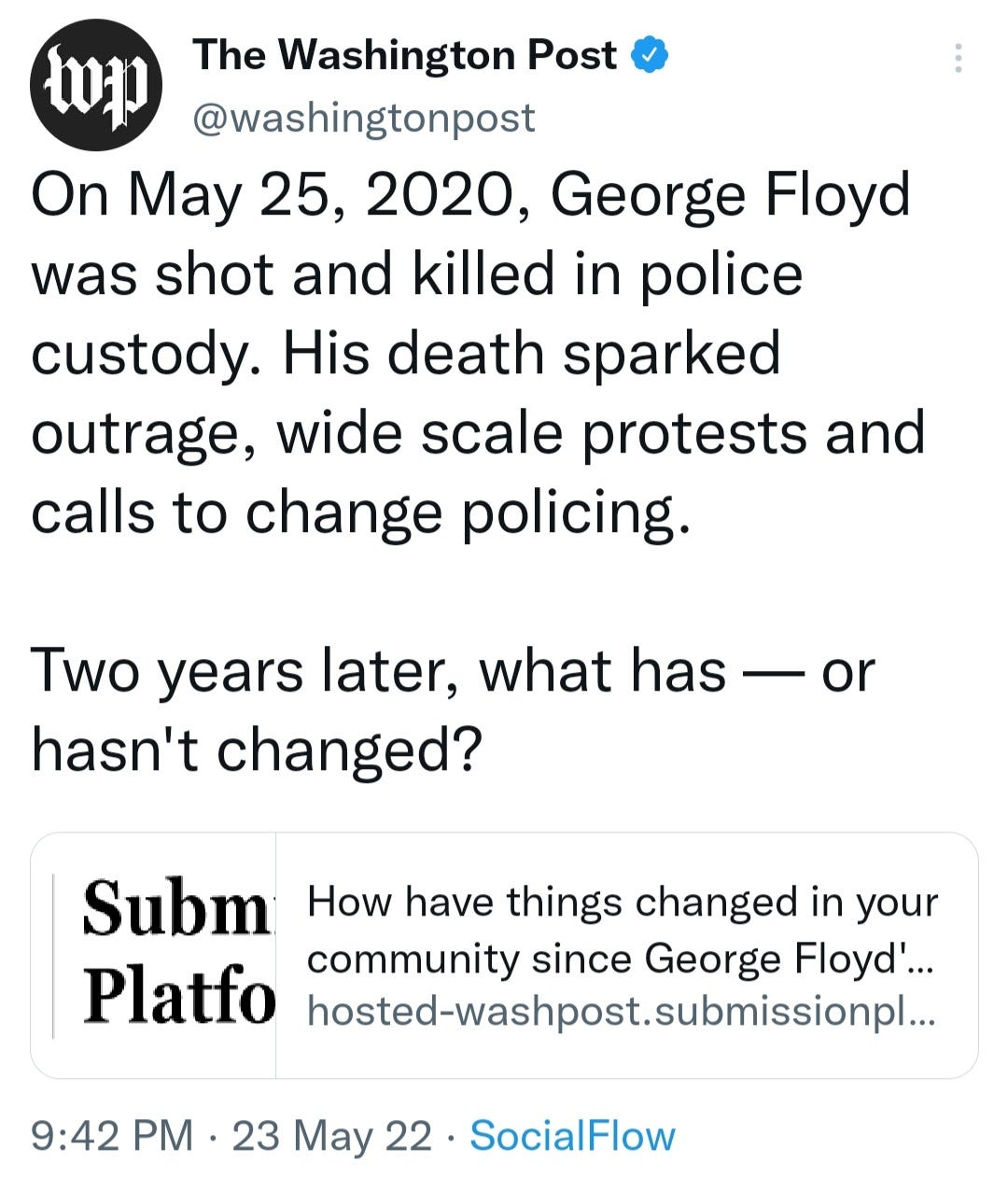The Washington Post's Endless Present
There are three explanations for this mishap—and none of them are good.
“Every record has been destroyed or falsified, every book rewritten, every picture has been repainted, every statue and street building has been renamed, every date has been altered. And the process is continuing day by day and minute by minute. History has stopped. Nothing exists except an endless present in which the Party is always right.”
This quote from George Orwell’s iconic book 1984 used to be viewed as well-written dystopian fiction. Now, however, it sadly appears that the Democratic party and the mainstream media—but I repeat myself—have adopted the idea of the “endless present in which the Party is always right” for their news/propaganda strategy.
Just yesterday the Washington Post tweeted out, “On May 25, 2020, George Floyd was shot and killed in police custody.” Now, this may sound a little off to you, and there’s a very good reason why: George Floyd did not die from a gunshot as the article implies, not was he shot at all. This error in reporting might have been forgiven if it was only present in a tweet—everyone makes typos (well, except for Ben Shapiro). However, this was not the case. This same, false line was in the Post’s article as well. To play the WaPo’s advocate for a moment, they did soon correct both the tweet and the article itself, and they issued a statement, “We've deleted a previous tweet for this form that included language that was changed after publish” (yeah, they made at least one typo today). Nevertheless, the statement did not actually correct the false wording; it only provided a reason for the deletion of the tweet. Speaking of the tweets, here are the screenshots:
There are three main explanations for this mishap—and none of them are good.
Explanation #1: Occam’s razor. This explanation suggests that there really was just a typo in the article, which then got pasted into the tweet. When the mistake was discovered, the article and tweet were changed and deleted respectively. Although it is true that this is a possibility, personally, I rather doubt it.
Explanation #2: ignorance. The person and/or persons in charge of writing the article and posting the tweet did not know the facts of the incident, and did not bother to look them up before posting. Again, when the mistake was discovered, the article and tweet were changed and deleted respectively. This is a more worrisome and—in my opinion—more likely explanation for what happened than the first. This kind of negligence while writing at one of the most influential newspapers in the world can—with the risk of sounding like a Leftist—misinform the public and agitate the already extremely volatile public opinion regarding Floyd and his death. Still, this explanation still suggests a misguided, not malevolent intent behind the article and tweet: which makes it an altogether more preferable, if not as likely, explanation as compared to the final.
Explanation #3: Orwell. This explanation, judging from the normally unobjective reporting of the WaPo—as well as the reporting of other mainstream media outlets such as the New York Times, MSNBC, and CNN—assumes that there was a malevolent intent behind the error. Painting Floyd as having been gunned down, would have worked rather well with the current race-war narrative that the Left is surely intent on bringing out through the November elections. To be perfectly honest, this is the explanation that I think makes the most sense. In this case, the reason that the WaPo would have edited and deleted the article and tweet respectively would have been because they were getting too much heat for the falsehood, and they decided to cut their losses.
Regardless of the unknowable intent behind this mishap, the fact that the WaPo was forced to make some kind of concession and retraction does signify to me at least that we are not quite yet living in the endless present of George Orwell’s 1984.
America Forever,
Socrates Finch


